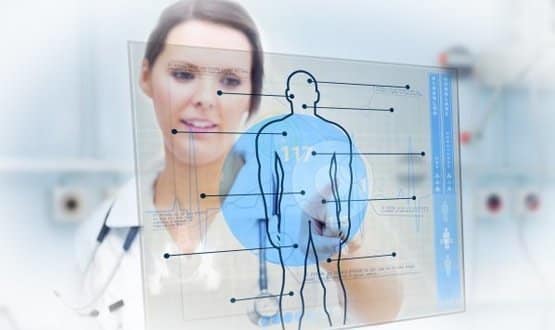Medicine can be an imprecise science. Working out the best treatment for a particular patient often relies on a doctor’s experience and intuition as much as on text books and rules.
A middle-aged woman with a history of chronic illness, for example, may respond very differently to a drug treatment to young man with no other illnesses.
A single complex system
But this could change, thanks to the developing field of in silico medicine, which uses computer models to develop a better understanding of how human physiology works.
The newly launched Insigneo Institute, a collaboration between the University of Sheffield and Sheffield Teaching Hospitals NHS Foundation Trust, will focus exclusively on in silico techniques to establish a virtual physiological human.
In effect, this will be a computer model that treats the entire human body as a single, complex system, enabling clinicians to understand the interactions between the different parts of the body.
Early efforts have concentrated on the musculoskeletal and cardiovascular systems, and a prototype to help doctors identify the extent of heart disease in patients, without recourse to invasive procedures, has already been developed.
In its first five years, the institute, which is staffed by 80 clinicians and academics, will focus on three particular areas: the digital patient, in silico clinical trials and personal health forecasting.
Building a digital patient
The idea of the digital patient is to use imaging techniques to create a computer model of an individual patient, based on relevant data about that patient.
Dr Keith McCormack, Insigneo’s business development manager, explains: “It should be possible, given enough time and resource, to come up with a computer simulation at a sufficient level of detail that any particular underlying disease condition can be personalised by obtaining measurements from individual patients, whether it be geometry measurements, anatomy or other physiological measurements.
“This would allow the computer simulation, when sufficiently cleverly programmed, to replicate the behaviour of that human system, and so to allow the exploration of what might be going wrong and which of the various therapies might be effective in that particular patient’s case.”
The simulation would even be able to calculate measurements where none are available, says McCormack.
“Some measurements require such a degree of invasion that they’re not physically possible, but using other measurements – typically imaging and other physiological measures – we can recreate the system in such detail that it is possible to make these additional measurements in the computer.”
Clinical trials with virtual humans
Clinical trials, as currently conducted, are imperfect tools for evaluating whether a treatment works.
They take a long time to run, it can be hard to find volunteers willing to take part, and they are often conducted on groups of people who are not representative of those likely to end up taking the drug.
By running trials on computerised models, Insigneo believes that it should be possible not just to reduce the development cycle, but to produce a more accurate assessment of how patients will respond to a particular treatment.
“We are never going to do away with clinical trials that involve real people, but we want to minimise the use of human guinea pigs and animals in the process of the introduction of drug therapies,” says McCormack.
Personal health forecasting refines the idea of the digital patient still further. A personalised model of a patient can be updated to take into account additional data about the patient, taken from sensors monitoring blood pressure or heart rate, for example, or from up-to-date scans.
By using this information, clinicians will be able to make an accurate forecast about the development of a disease and design treatment accordingly.
Already the institute has developed a tool that can predict whether a cerebral aneurysm is likely to rupture, and therefore needs to be treated immediately (with all the associated risk that carries), or can be left alone, with a scan to check progress in a year’s time.
Data is essential
The more data the team has, the more accurate the virtual physiological human will be. McCormack says he is hoping for a change in the public perception of the usefulness of allowing researchers access to anonymised patient data.
“We need to have access to the widest possible range of existing data to tell us ‘this is the range of physiological measurements’: these are typical sizes of heart, or typical strengths of bone.
“We want to know that the bone of a 45-year old female behaves in this way, so that when we have a 45-year old female who is coming for treatment, we can look at the library of information on 45-year old females and do a much better job of predicting what’s likely to happen.”
A change to medical practice?
A large part of Insigneo’s funding comes from the European Commission and comes with the condition that the institute has to collaborate with other research organisations across EU member states.
Altogether, says McCormack, there are about 3,000 people actively working in virtual physiological human activity, based in different institutions.
But the institute will also rely on industrial partners to help create standards (for use in virtual clinical trials, for example) that can be used universally, and to turn the models produced by Insigneo into viable commercial propositions.
McCormack knows that it may be many years before the full impact of the in silico research is felt in clinical practice, but he has no doubt it is coming.
“All these steps are gradual, but they’re building towards a new future where all these incremental improvements in the way patients are dealt with bring about a fairly significant change in the way that medical practice is conducted.”

